|
ID |
Nickname |
Country / City |
Languages |
Taxonomies |
Comment |
Project / Group |
Map |
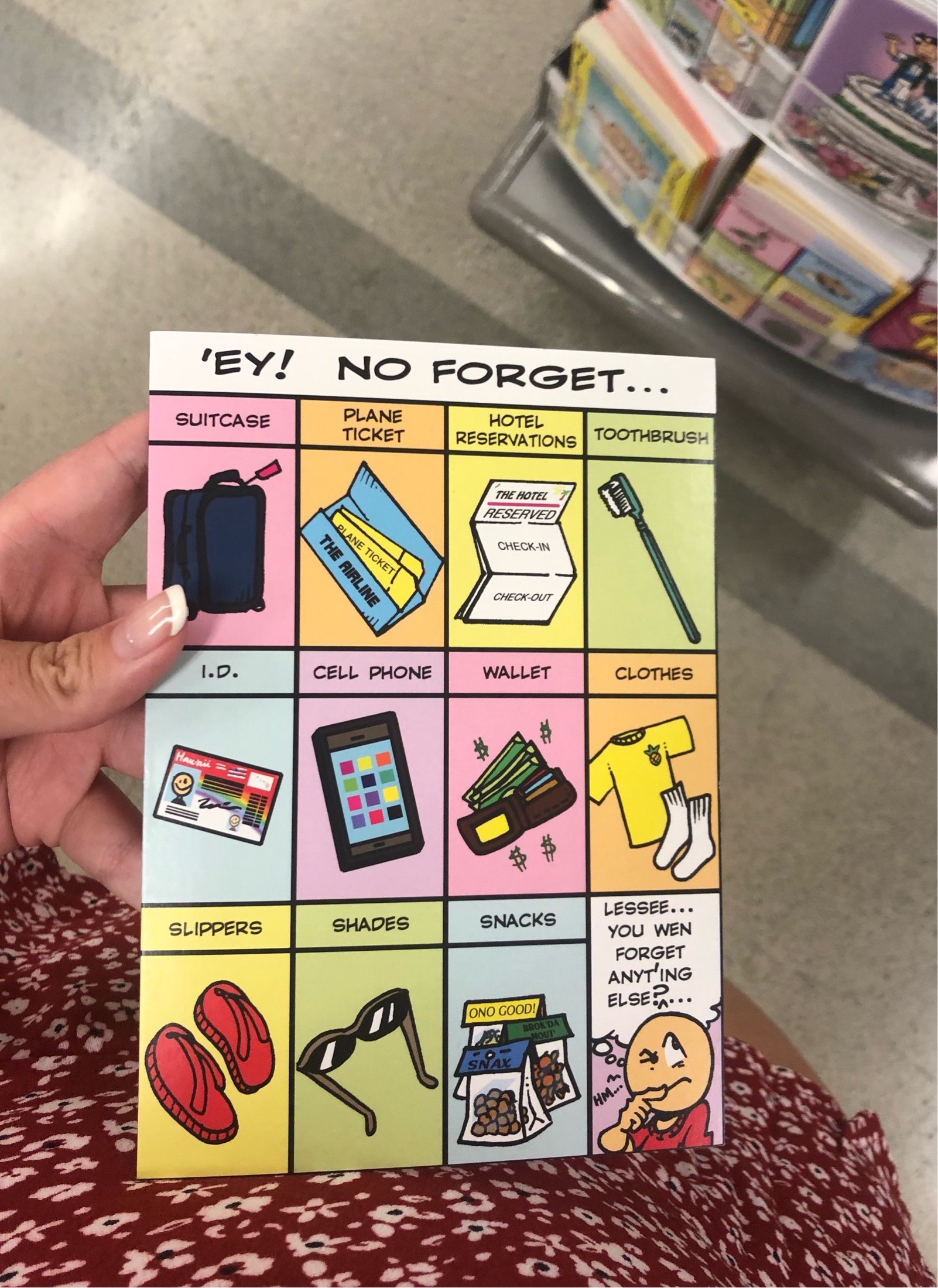
|
44118
|
|
United States
Honolulu
|
|
|
I saw another card in pidgin at target. Super cute and funny cards. GM
|
Multilingual Hawaiʻi
|
|
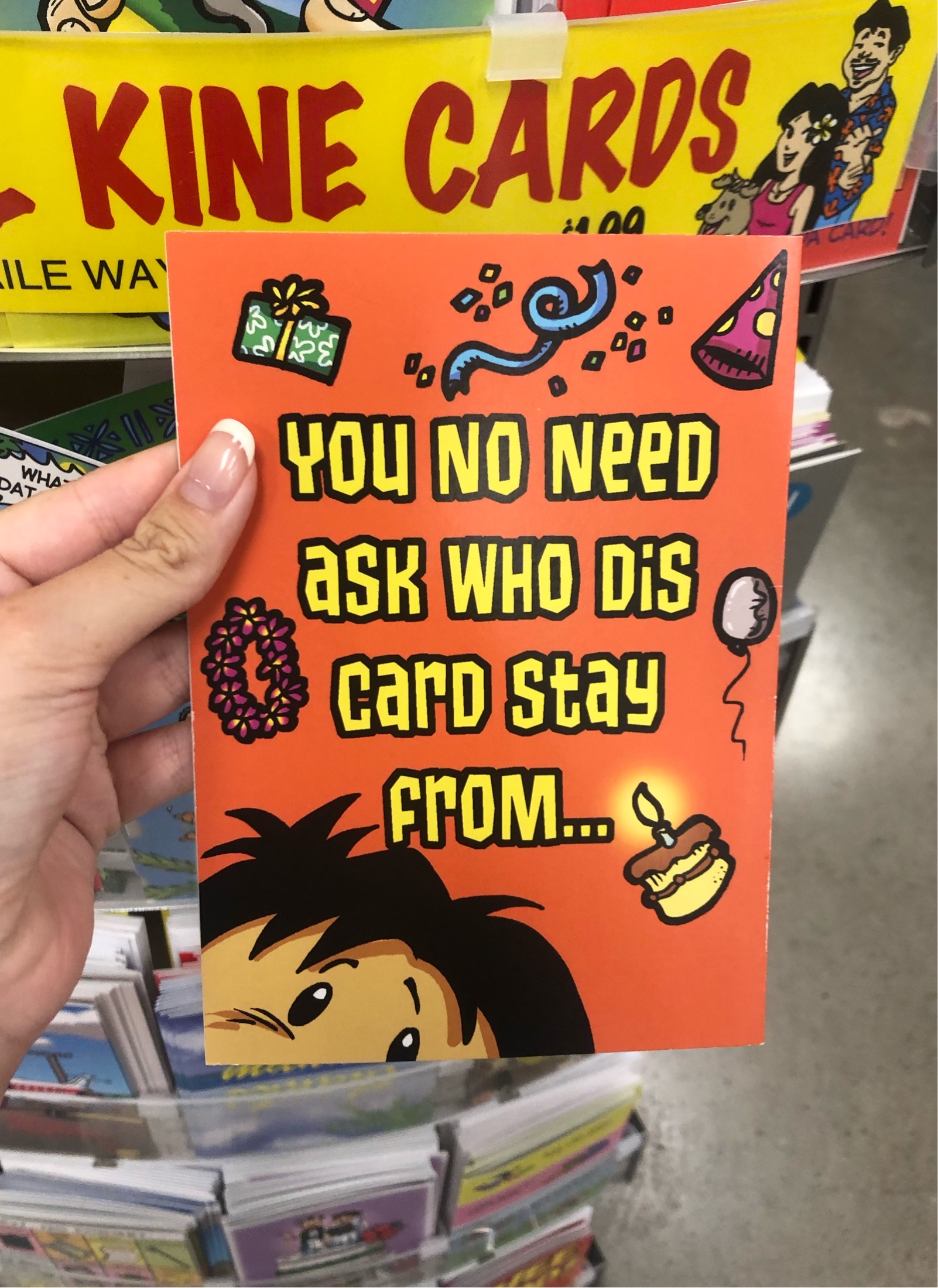
|
44117
|
|
United States
Honolulu
|
|
|
A birthday card in pidgin at target. GM
|
Multilingual Hawaiʻi
|
|

|
44116
|
|
United States
Honolulu
|
|
|
A sign at the airport for the bathroom for women. GM
|
Multilingual Hawaiʻi
|
|

|
44115
|
|
United States
Kapolei
|
|
|
A sign for the bathroom for Men. GM
|
Multilingual Hawaiʻi
|
|

|
44114
|
|
United States
Honolulu
|
|
|
I also saw another sign in my dorm tower on the top floor with both pidgin and Hawaiian. Just some common words to get to know. GM
|
Multilingual Hawaiʻi
|
|
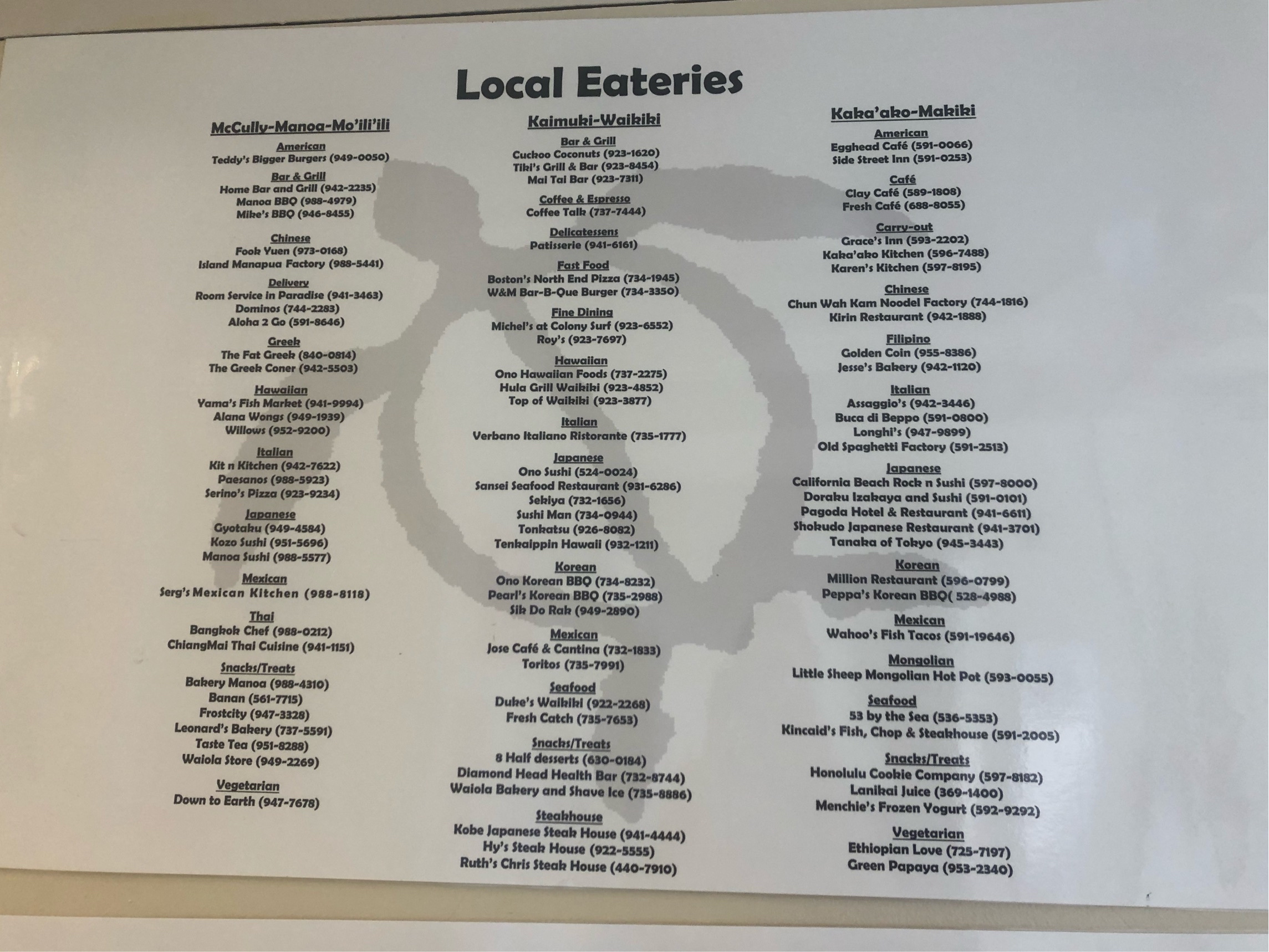
|
44113
|
|
United States
Honolulu
|
|
|
I saw this sign in my dorm tower on the top floor. This is a sign of recommendations for food places nearby. GM
|
Multilingual Hawaiʻi
|
|
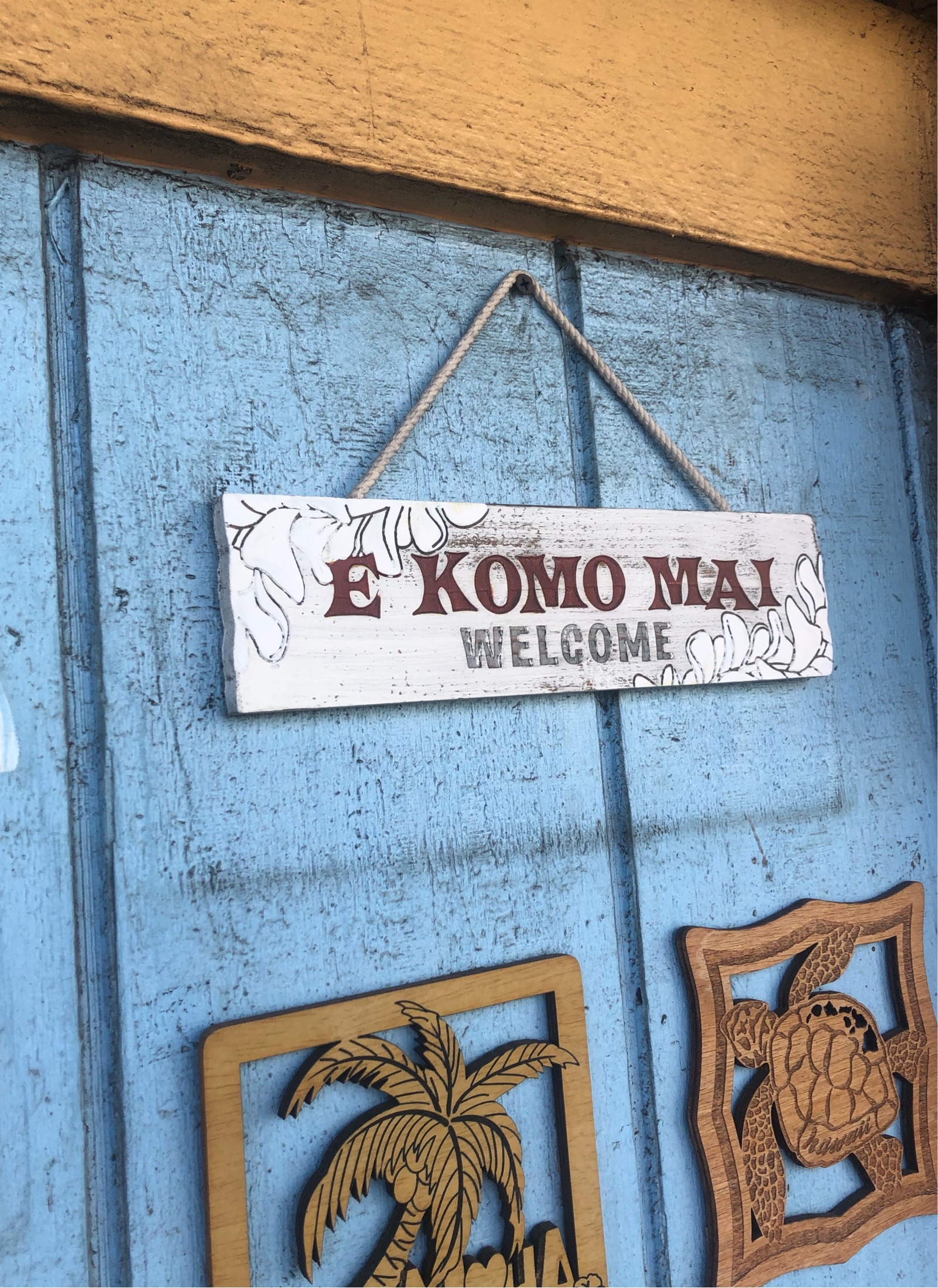
|
44112
|
|
United States
Honolulu
|
|
|
The shaved ice place also had a sign that said E Komo Mai which means welcome in Hawaiian.
GM
|
Multilingual Hawaiʻi
|
|
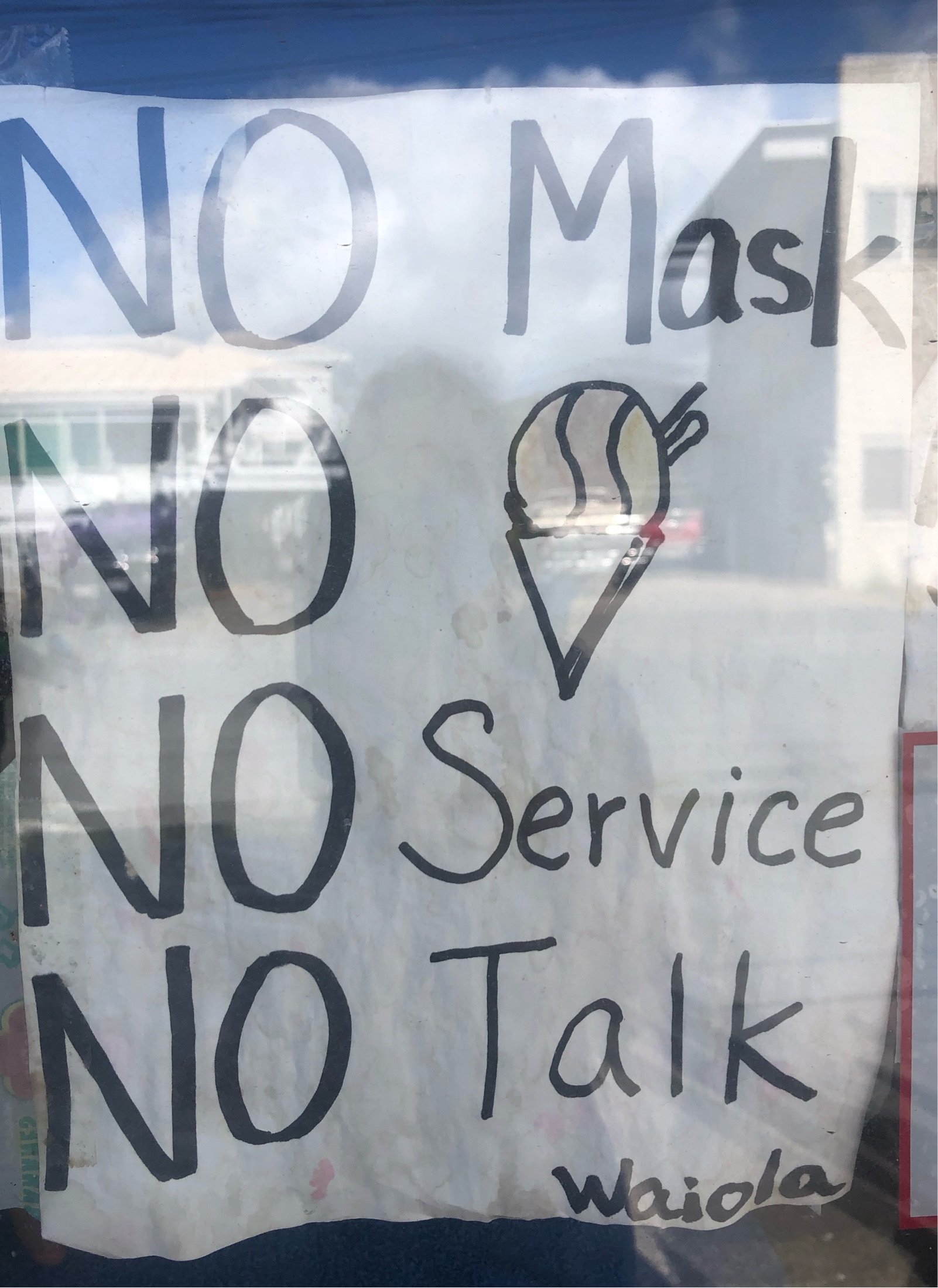
|
44111
|
|
United States
Honolulu
|
|
|
I forgot to add my initials with the photo.
This picture indicates that if you don’t have a mask you don’t get to order shaved ice.
GM
|
Multilingual Hawaiʻi
|
|

|
44110
|
|
United States
Honolulu
|
|
|
This was another sign that I saw while ordering shaved ice. This sign indicates that if you have no mask, you are not allowed to enter. GM
|
Multilingual Hawaiʻi
|
|

|
44109
|
|
United States
Honolulu
|
|
|
I was going to get shaved ice and saw this sign while ordering. This sign indicates if you have no mask they will give you no service.
|
Multilingual Hawaiʻi
|
|
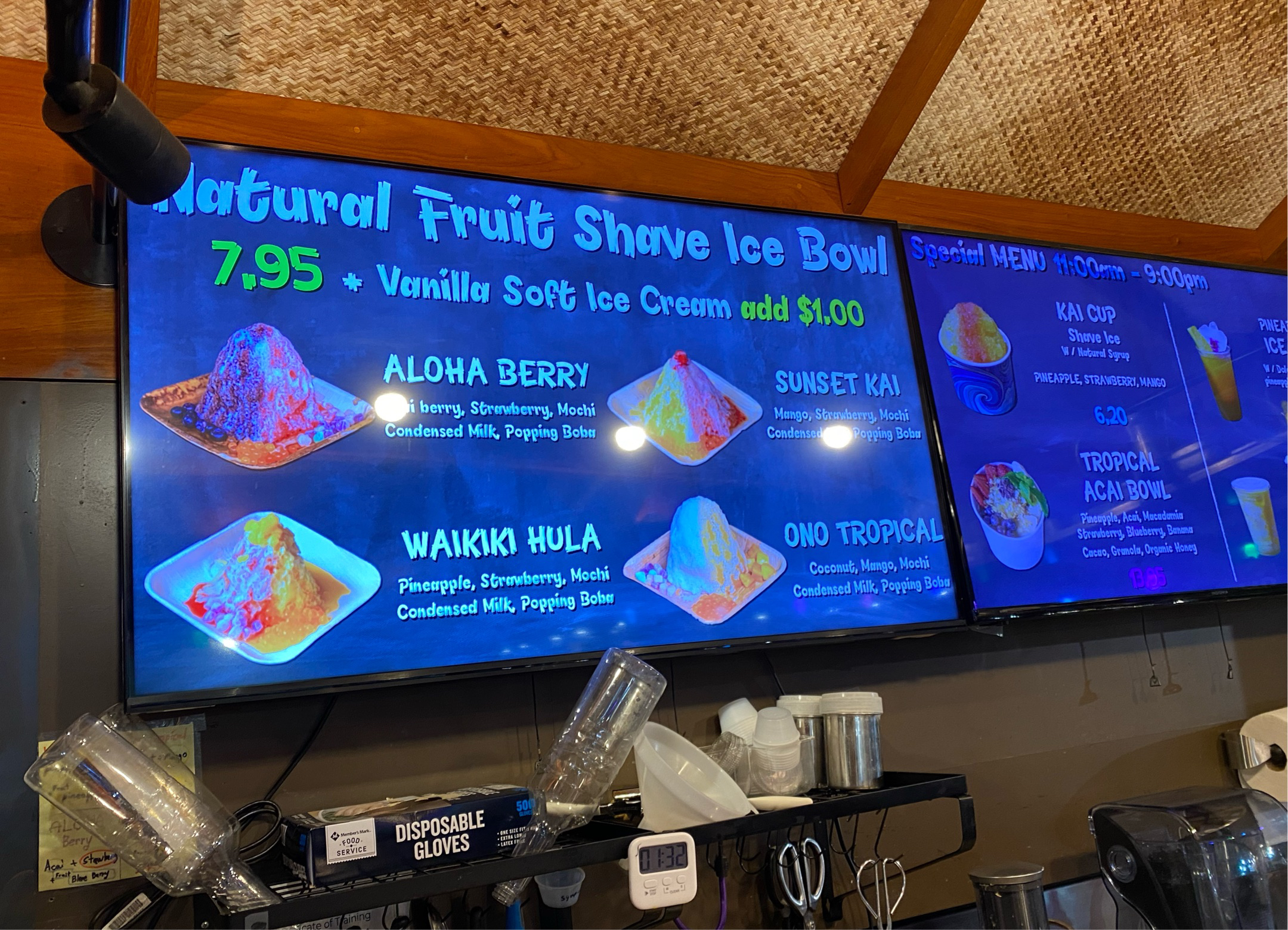
|
44107
|
|
United States
Honolulu
|
|
|
JP
This iPhoto was taken at a kiosk stand in Waikiki
|
Multilingual Hawaiʻi
|
|
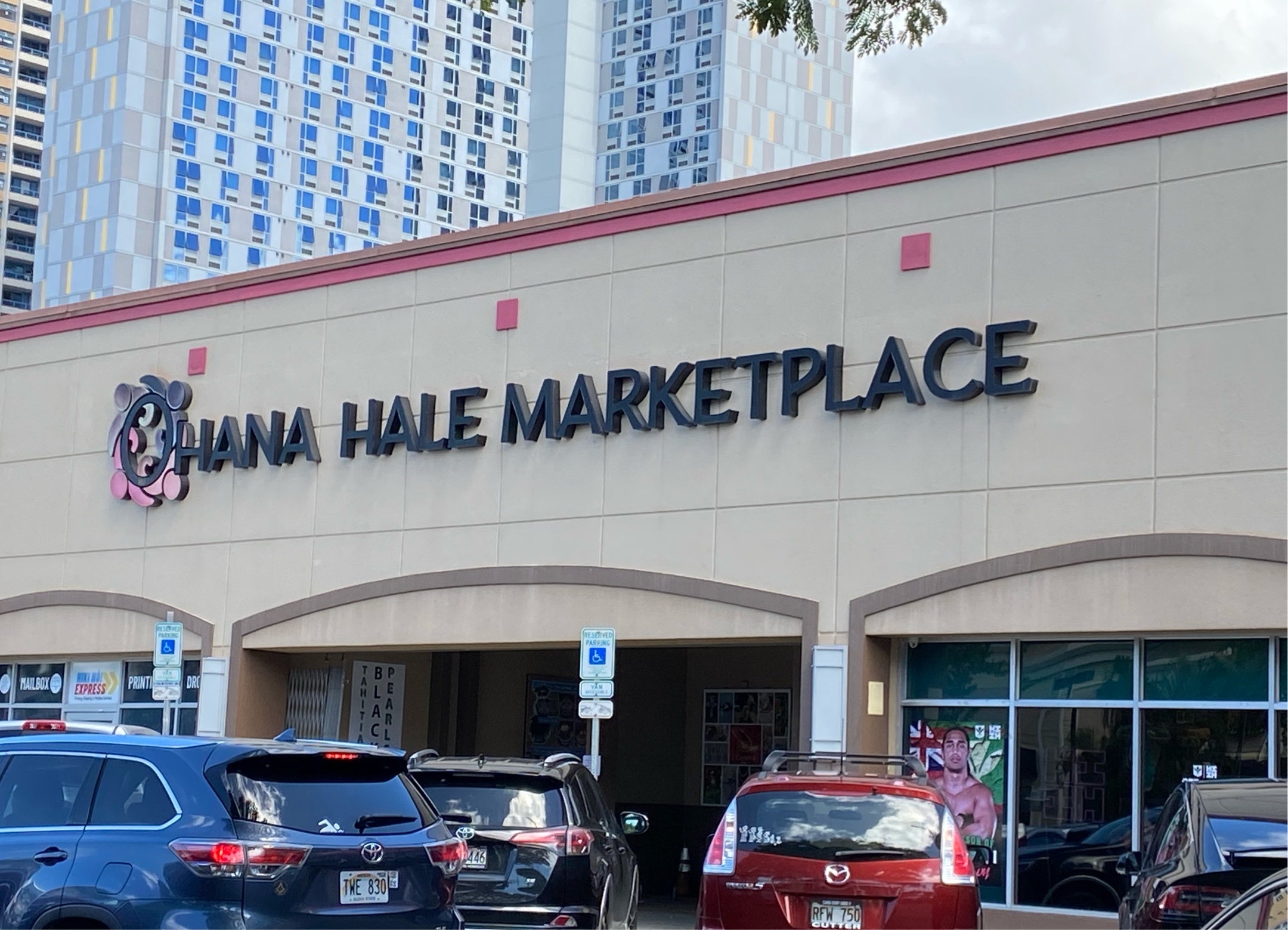
|
44106
|
|
United States
Honolulu
|
|
|
JP
This is a communal marketplace in Honolulu
|
Multilingual Hawaiʻi
|
|
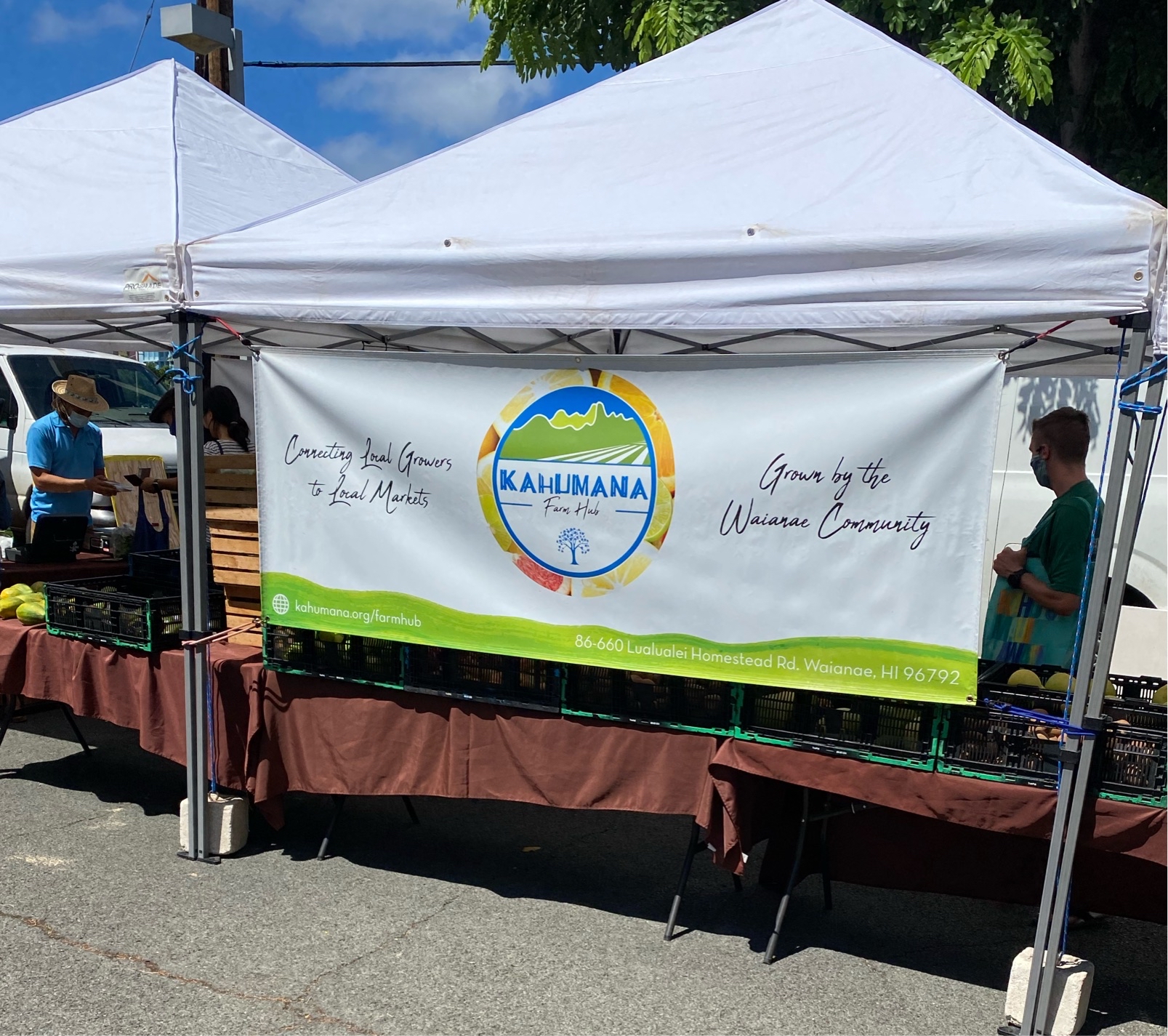
|
44105
|
|
United States
Honolulu
|
|
|
JP
This was taken at the farmers market in Kakaako
|
Multilingual Hawaiʻi
|
|

|
44103
|
|
United States
Honolulu
|
|
|
The domain is for the public and to promote this Hawaii snack. The purpose of this Pidgin is to lure in locals and to promote this product by saying that it is delicious. Ono means delicious. It is printed on paper. The implied message is that this Hawaii snack is a premium delicious lemon li-hing seeds.
- CQ
|
Multilingual Hawaiʻi
|
|

|
44102
|
|
United States
Honolulu
|
|
|
The domain is more personal and relates to people who are craving a Hawaii snack. The Pidgin in this case is the small yet visible “Da” before “Mini Pounder”. Da means the. The intended audience is for locals as this snack is most likely popular among locals. It is printed on plastic. The implied message is this snack is delicious.
- CQ
|
Multilingual Hawaiʻi
|
|
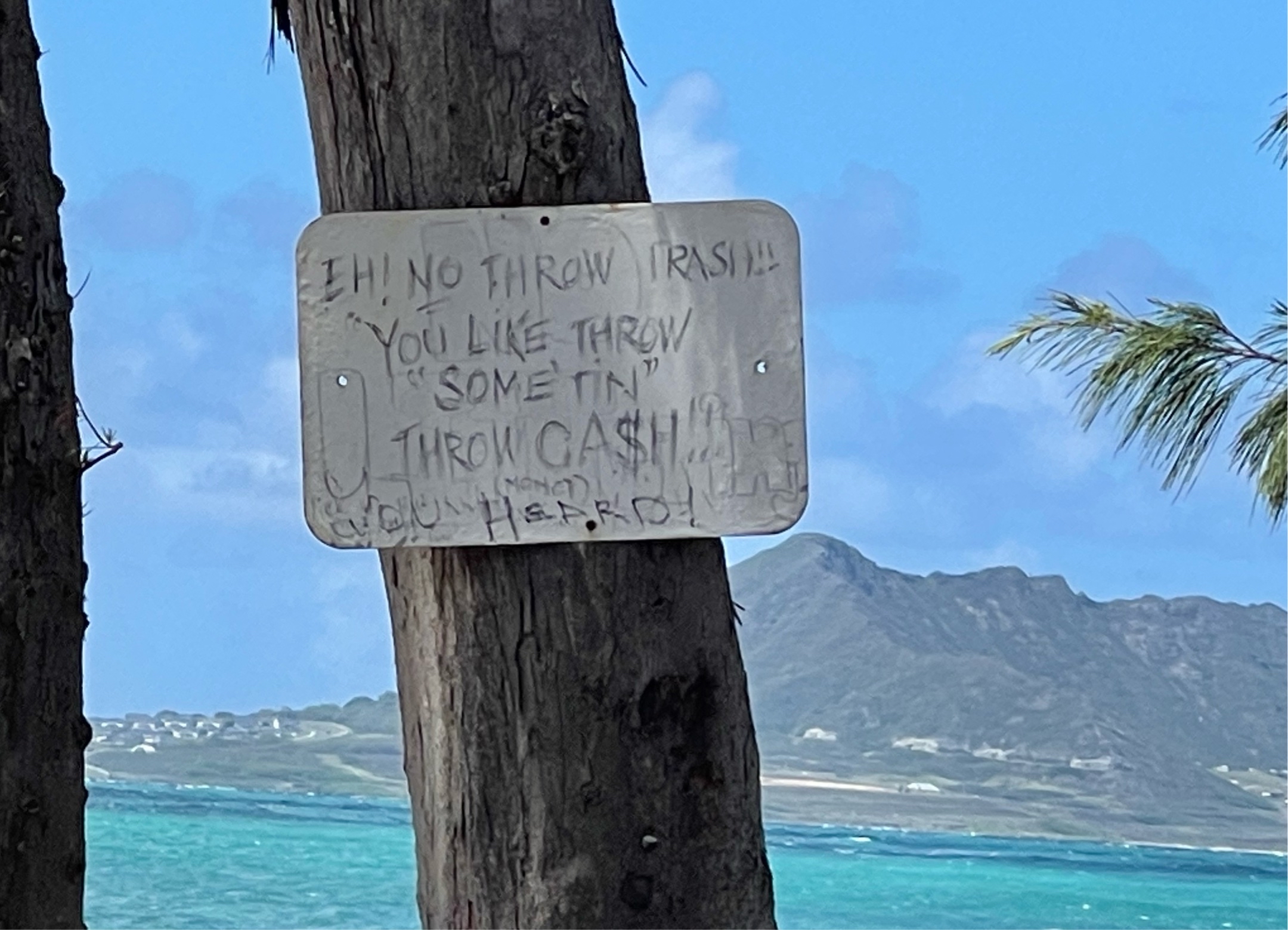
|
44101
|
|
United States
Kailua
|
|
|
The domain is for the public specifically towards those who liter at Kailua Beach Park. The pidgin in this case acts as message more of locals to tourists but also other locals too. It shows how locals care about Hawaii’s environment and want to take care of it. Instead of a sign just tell people to throw away their trash in the bins this has more attitude and tone so it created impact. The intended audience is for both tourists and locals at Kailua Beach Park. It is printed on a metal sheet. The implied as mentioned earlier was to not throw trash out on the beach. The literal translation is “Hey! Don’t throw trash here. If you want to throw something, throw cash! You hear!"
- CQ
|
Multilingual Hawaiʻi
|
|

|
44100
|
|
United States
Kailua
|
|
|
The domain is towards the consumers of Jamba Juice and the general public. The Hawaiian in this case is all names of places on the island of Oahu. The intended audience I feel is more towards tourists because all these places are places tourists were usually go or its a hotspot for tourists. It could be printed on wallpaper. The implied message is to advise tourists and maybe locals to go there for their next trip because of the nice scenery.
- CQ
|
Multilingual Hawaiʻi
|
|
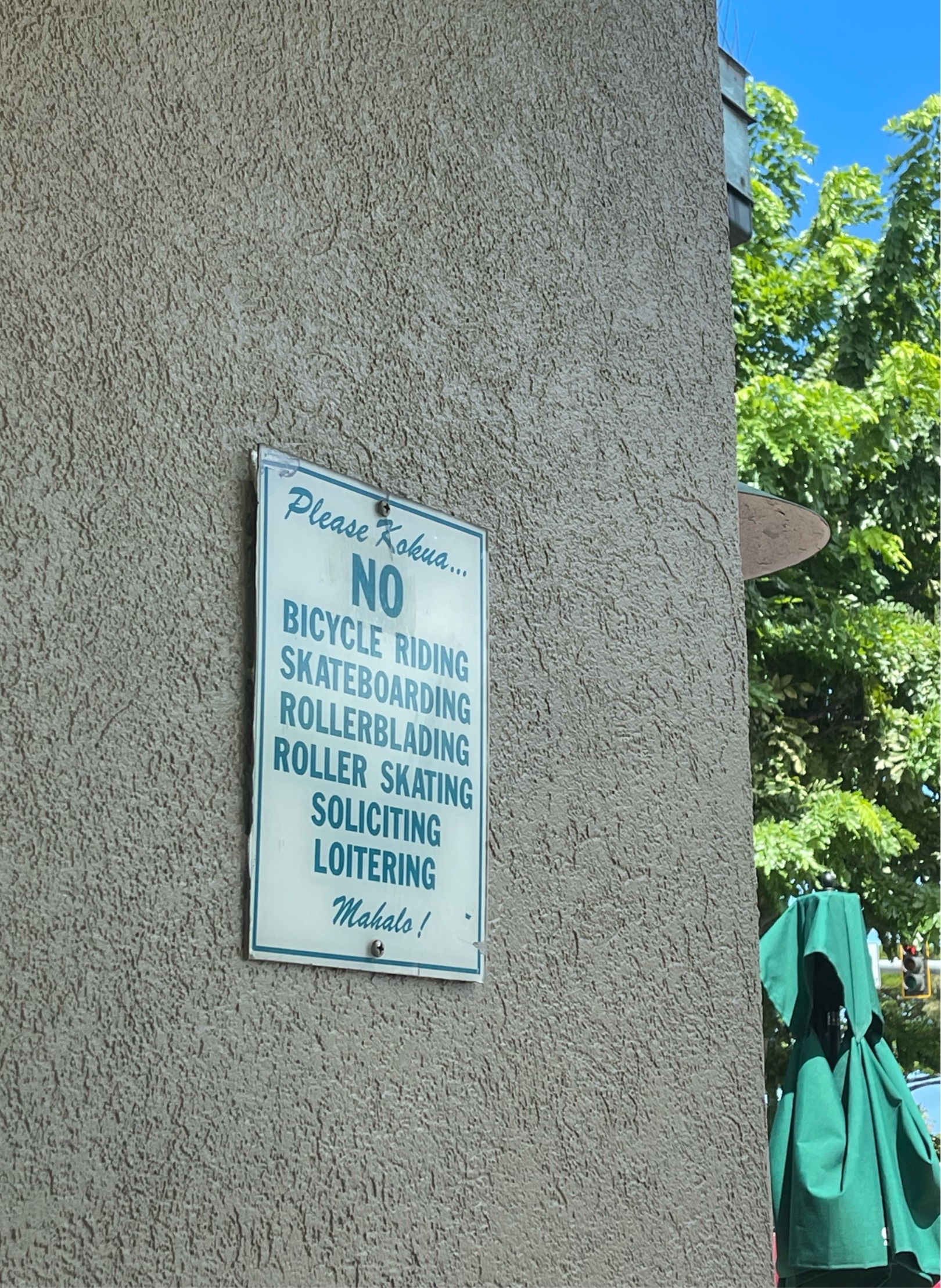
|
44099
|
|
United States
Kailua
|
|
|
The domain is in relation to the general public more specifically those at the shopping center. The Hawaiian in this case adds authenticity to the community. In particular of this area it was booming with a lot of tourists so in a way to the tourists it gives off a Hawaii vibe. The intended audience is the public. It is printed on a sheet of metal. The implied message is to not do the following actions. Kokua meaning help so the phrases mean “please help” and for Mahalo “goodbye”.
- CQ
|
Multilingual Hawaiʻi
|
|

|
44098
|
|
United States
Kailua
|
|
|
The domain in this case relates to personal needs and the general public. The Hawaiian in this case acts as the name for this clothing store. Mahina just means month(s). The intended audience is those seeking a more hawaiian and maybe traditional styled clothing. This is a sign and is not printed. The implied message is shown by establishing a connection between the Hawaiian word and and the Hawaiian-style clothing.
- CQ
|
Multilingual Hawaiʻi
|
|
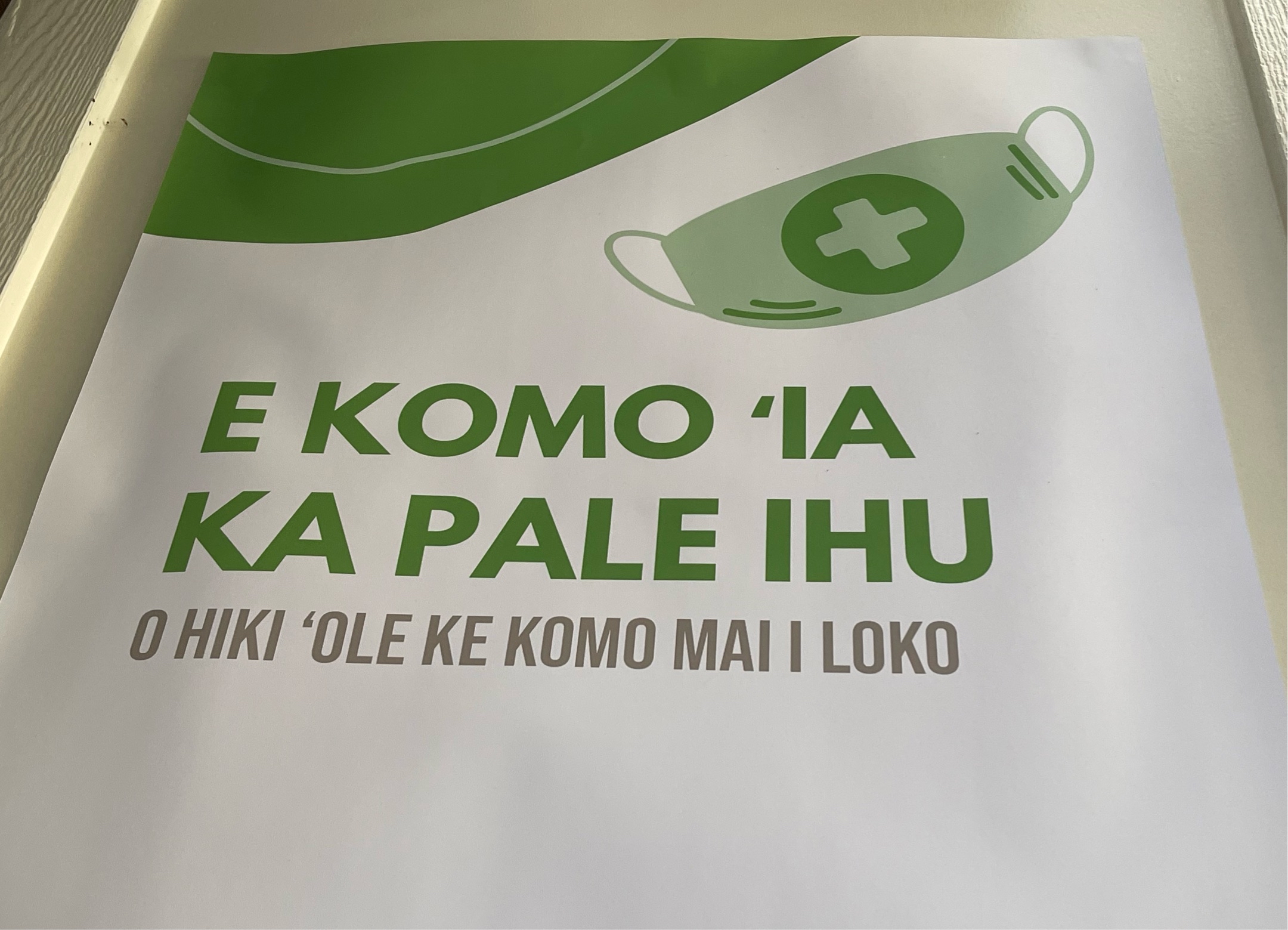
|
44097
|
|
United States
Honolulu
|
|
|
The domain is school or education. The Hawaiian in this case is I believe to tell people to wear their mask properly and if not they cannot enter QLC. The intended audience is towards people who can understand Hawaiian or Hawaiian people. I believe this also attracts students into wondering what is meant by this image. I also believe that it is placed to provide a more linguistic landscape for Hawaiian. It is printed on a poster. The direct translation of this accord to google is “enter it, the nose protection, you cannot come in”.
- CQ
|
Multilingual Hawaiʻi
|
|